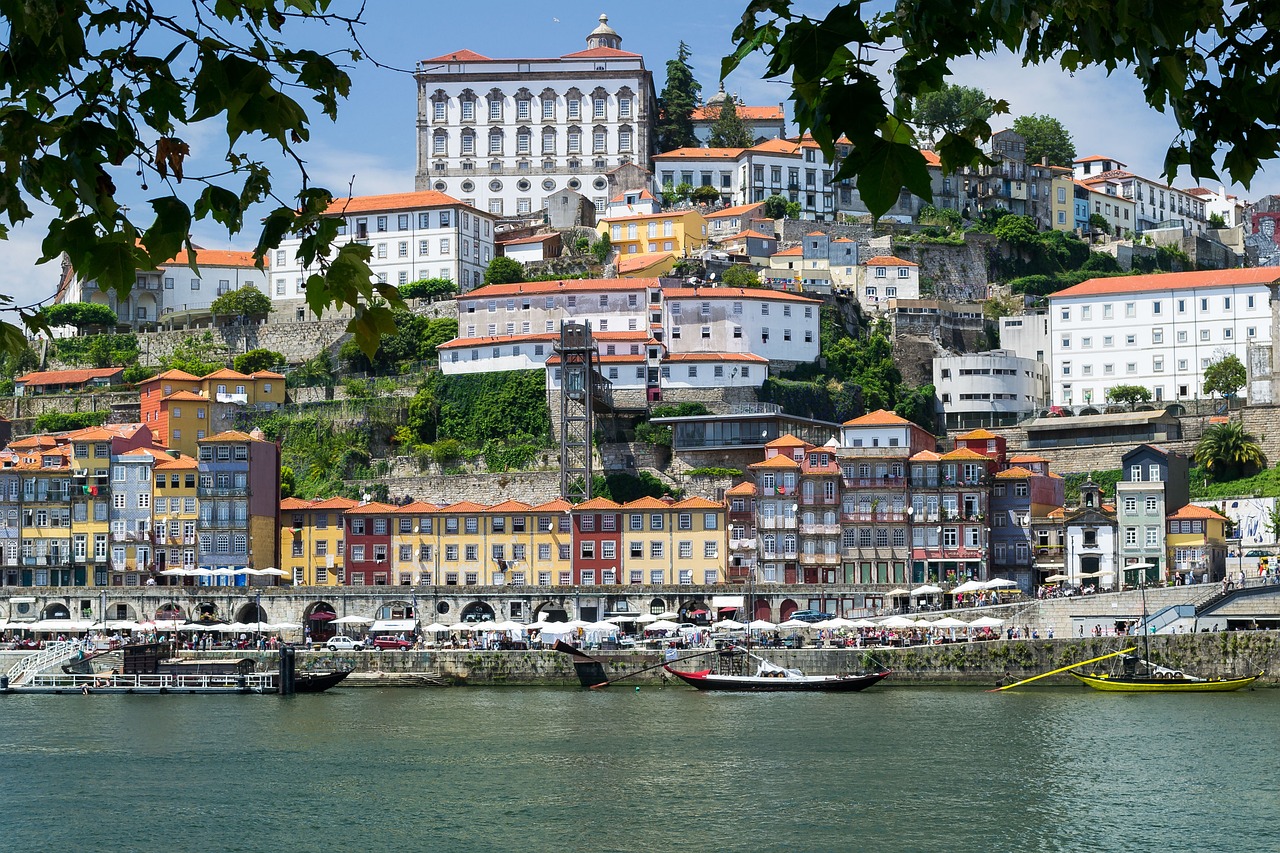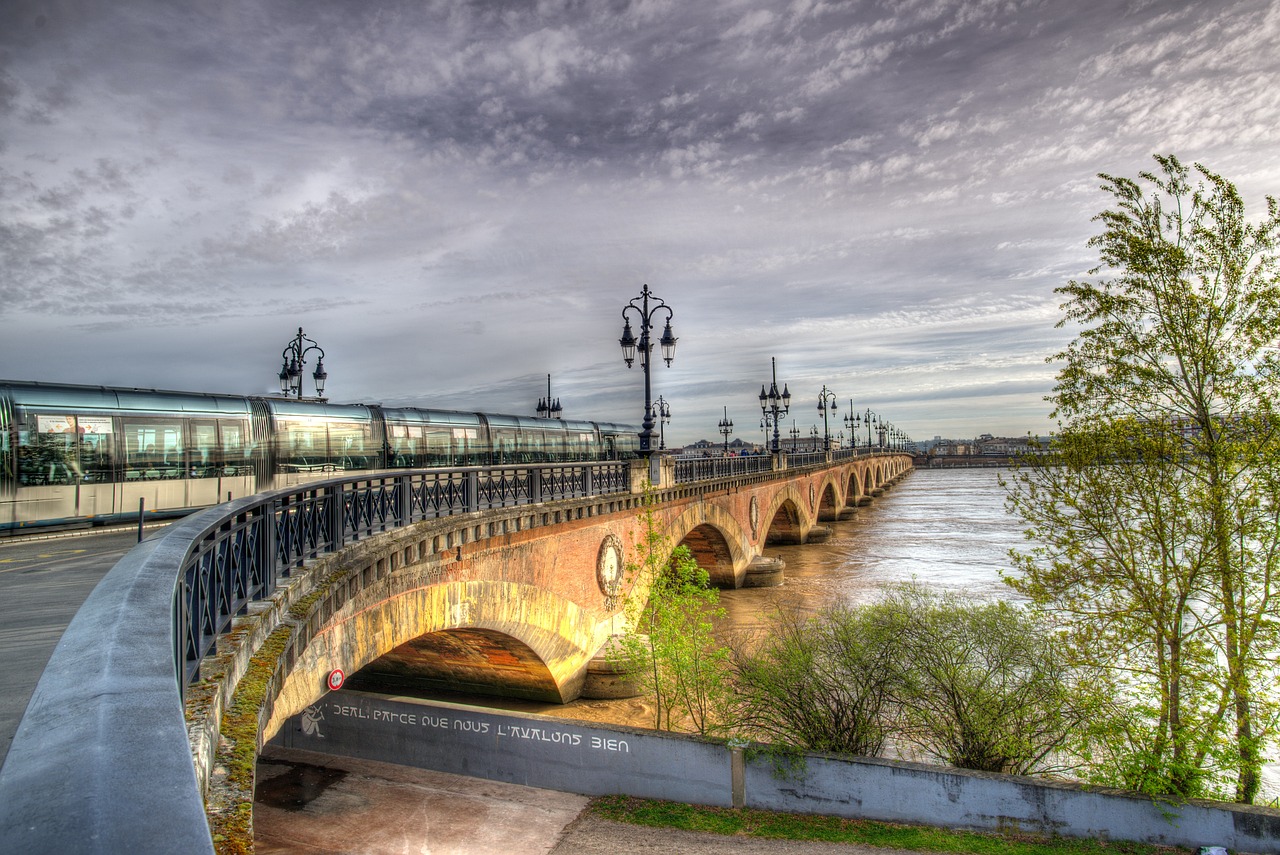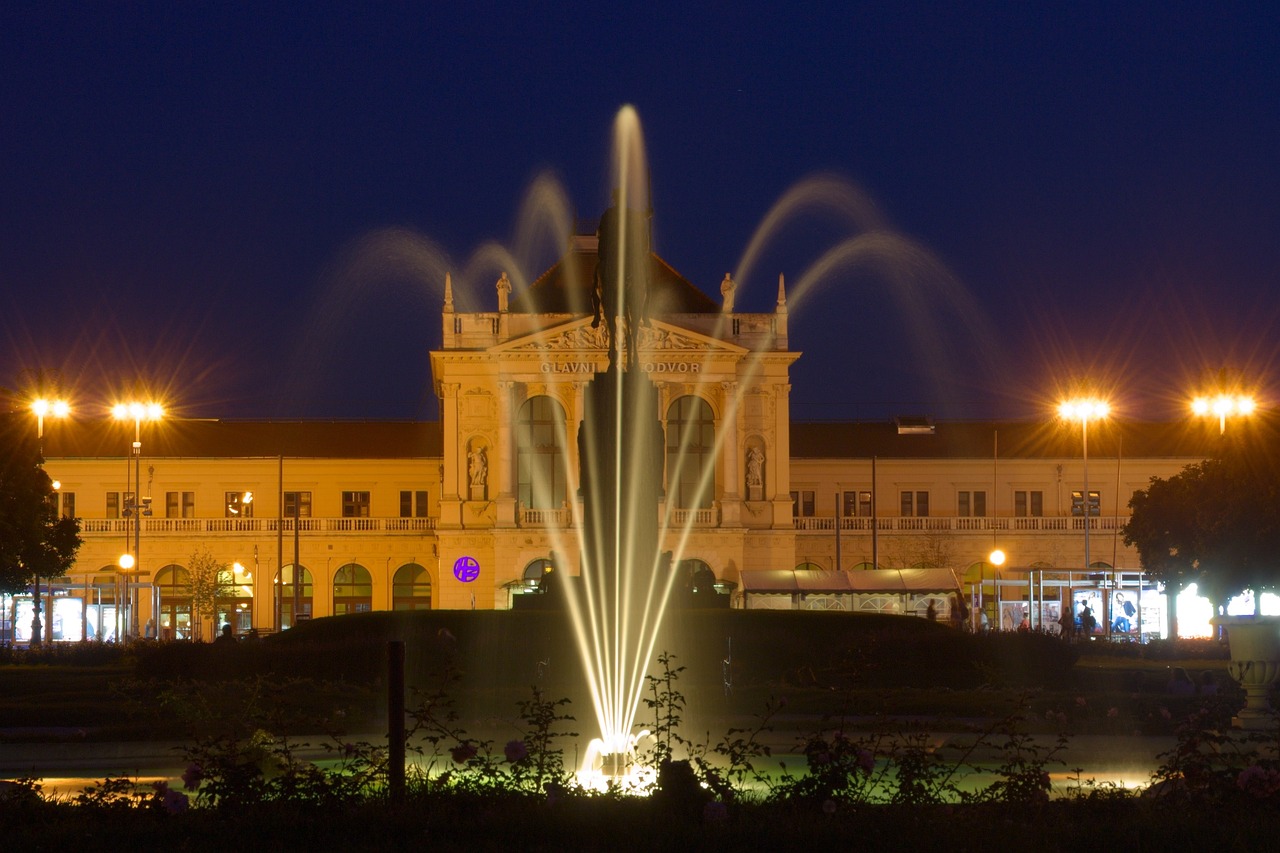Porto is a city located in the northwest region of Portugal, on the banks of the Douro River. It is the second largest city in Portugal after Lisbon and is known for its historic landmarks, culture, and wine production. Porto is also the birthplace of port wine, a fortified wine produced in the Douro Valley region of Portugal. The city’s historic center, known as the Ribeira district, is a UNESCO World Heritage Site and is home to many of Porto’s most popular attractions, including the Dom Luis I Bridge and the Porto Cathedral.
Short History
Porto has a long and rich history dating back to ancient times. The city was founded by the Celts in the 3rd century BC and later became an important Roman port called Portus Cale. In the 11th century, Porto was captured by the Moors and remained under Muslim control until the 12th century, when it was reconquered by Christian forces.
During the Middle Ages, Porto became an important trading center and a hub for maritime trade with Northern Europe. In the 14th and 15th centuries, Porto became the center of Portugal’s wine industry, with the production of port wine beginning in the Douro Valley.
In the 18th and 19th centuries, Porto played a key role in Portugal’s industrial revolution, with the city’s textile and leather industries driving its economic growth. The city also played a prominent role in Portugal’s struggle for independence from Spain in the early 19th century.
In the 20th century, Porto continued to grow and modernize, becoming a major cultural and economic center in Portugal. Today, Porto is a vibrant city that celebrates its rich history and culture while also looking towards the future.
Architecture
Porto is known for its beautiful architecture, which reflects the city’s rich history and cultural heritage. Here are some of the most prominent architectural styles and landmarks in Porto:
- Baroque: Porto is home to many stunning baroque buildings, including the Clérigos Tower, the Church of St. Francis, and the Porto Cathedral.
- Romanesque: The Romanesque style is prevalent in many of Porto’s historic churches, including the Church of Cedofeita and the Church of São Pedro de Miragaia.
- Neoclassical: The neoclassical style is represented in many of Porto’s grand public buildings, such as the Palácio da Bolsa and the São Bento train station.
- Art Nouveau: Porto has a rich tradition of Art Nouveau architecture, which can be seen in many of the city’s buildings, including the Café Majestic and the Casa da Música.
- Contemporary: Porto is also home to several stunning contemporary buildings, such as the Serralves Museum of Contemporary Art and the Casa da Música concert hall.
Porto’s architecture is a blend of many different styles and periods, which creates a unique and beautiful urban landscape. Visitors to Porto can explore the city’s many historic landmarks and modern buildings to experience the city’s rich architectural heritage.
Museums and Galleries
Porto is home to a variety of museums and galleries that offer a glimpse into the city’s rich history, art, and culture. Here are some of the most interesting museums and galleries in Porto:
- Serralves Museum of Contemporary Art: This museum is one of the most important contemporary art institutions in Portugal and is home to an impressive collection of modern and contemporary art.
- Porto Museum of Contemporary Art: This museum is housed in a beautiful building in the Boavista area and is home to a collection of modern and contemporary Portuguese art.
- National Museum Soares dos Reis: This museum is housed in a beautiful 18th-century palace and features a collection of decorative arts, ceramics, and sculptures.
- Museum of Port Wine: This museum is dedicated to the history and production of port wine, which is one of Porto’s most famous exports.
- Casa-Museu Guerra Junqueiro: This museum is housed in the former home of the poet and writer Guerra Junqueiro and features a collection of art and decorative objects from around the world.
- S. João National Theater: This historic theater is one of the most beautiful buildings in Porto and is known for its stunning neoclassical architecture.
Porto’s museums and galleries offer a wide range of art and cultural experiences, from contemporary art to historic artifacts and cultural treasures. Visitors to Porto can immerse themselves in the city’s rich history and artistic heritage by exploring its many museums and galleries.
Landmarks and Monuments
Porto is a city rich in history and culture, and it is home to many interesting landmarks and monuments. Here are some of the most notable landmarks and monuments in Porto:
- Clérigos Tower: This baroque tower is one of Porto’s most recognizable landmarks and offers stunning views of the city from its observation deck.
- Porto Cathedral: This Romanesque cathedral is one of the oldest landmarks in Porto and features beautiful Gothic and Baroque elements.
- Palácio da Bolsa: This neoclassical building was once the headquarters of the Porto Stock Exchange and features stunning interior decorations and a beautiful Arabian Room.
- Dom Luis I Bridge: This iconic double-decker bridge spans the Douro River and offers breathtaking views of the city and the river.
- São Bento train station: This historic train station is known for its stunning azulejo tiles that depict scenes from Portugal’s history.
- Ribeira Square: This lively square in Porto’s historic center is lined with colorful buildings, cafes, and restaurants and offers a lively atmosphere day and night.
- Casa da Música: This striking contemporary building is home to Porto’s premier concert hall and is known for its bold, modern architecture.
Porto’s landmarks and monuments offer a rich tapestry of history, culture, and architectural beauty, and visitors to the city can explore these sites to experience the city’s unique character and charm.
Parks and Green Spaces
Porto is a city that is known for its beautiful parks and green spaces, which provide a welcome respite from the hustle and bustle of the city. Here are some of the most popular parks and green spaces in Porto:
- Crystal Palace Gardens: These beautiful gardens are located on a hilltop and offer stunning views of the city. They feature landscaped gardens, fountains, and a small lake.
- Serralves Park: This large park is home to the Serralves Museum of Contemporary Art and features beautiful gardens, a lake, and walking paths.
- City Park: This is the largest urban park in Portugal and features walking and biking trails, a small lake, and several playgrounds.
- Jardins do Palácio de Cristal: These gardens are located next to the Crystal Palace Gardens and feature a variety of trees, flowers, and sculptures.
- Parque da Cidade: This is one of the largest urban parks in Europe and features over 83 hectares of green space, including walking trails, sports fields, and a large lake.
- Virtudes Park: This park is located on a hill overlooking the city and offers stunning views of the Douro River and the city skyline.
Porto’s parks and green spaces offer a wide range of opportunities for relaxation, exercise, and enjoying the natural beauty of the city. Whether you’re looking for a quiet retreat or an active adventure, Porto’s parks have something for everyone.
Shopping Districts
Porto is a city that offers a variety of shopping experiences, from upscale boutiques to traditional markets. Here are some of the most popular shopping districts in Porto:
- Rua de Santa Catarina: This is Porto’s main shopping street and is home to a variety of shops, from high-end fashion boutiques to souvenir shops and department stores.
- Ribeira District: This historic district is known for its lively atmosphere and traditional shops selling handmade crafts, ceramics, and souvenirs.
- Mercado do Bolhão: This historic market is one of Porto’s most iconic landmarks and is known for its fresh produce, meats, and seafood.
- Avenida da Boavista: This is one of Porto’s most upscale neighborhoods and is home to luxury boutiques, high-end restaurants, and designer shops.
- Cedofeita: This trendy neighborhood is known for its unique boutiques and independent shops selling everything from vintage clothing to handmade jewelry.
- Vila Nova de Gaia: This area, located across the Douro River from Porto, is known for its port wine cellars and shops selling a variety of port wines and other local products.
Porto offers a variety of shopping experiences, from traditional markets to high-end boutiques, and visitors to the city can explore its many shopping districts to find the perfect souvenirs and gifts to take home.
Food and Drink
Porto is known for its delicious cuisine and rich culinary heritage. Here are some of the most popular foods and drinks to try in Porto:
- Francesinha: This is Porto’s most famous dish, a hearty sandwich made with bread, ham, sausage, and steak, covered in melted cheese and a rich tomato sauce.
- Tripas à moda do Porto: This is a traditional Porto dish made with tripe, white beans, and various meats, and is considered the city’s signature dish.
- Bacalhau: This is a traditional Portuguese dish made with salted cod, and there are countless variations of this dish in Porto.
- Port wine: Porto is famous for its port wine, a fortified wine that is produced in the Douro Valley region of Portugal. Visitors can take tours of local wineries and taste the many varieties of port wine.
- Pastéis de nata: These are delicious custard tarts that are popular throughout Portugal, and can be found in many cafes and bakeries in Porto.
- Caldo Verde: This is a traditional Portuguese soup made with potatoes, onions, kale, and chorizo, and is a popular dish in Porto during the colder months.
- Vinho verde: This is a light and refreshing white wine that is produced in the Minho region of Portugal and is a popular drink in Porto.
Porto offers a variety of delicious foods and drinks that reflect the city’s rich culinary heritage and culture. Whether you’re looking for traditional Porto dishes or want to explore the city’s wine and pastry culture, there is something for everyone to enjoy.
Transportation
Porto is a relatively compact city, and many of its main attractions can be easily reached on foot. However, there are also several other transportation options available to visitors:
- Metro: Porto’s metro system is modern, efficient, and affordable. It is a great option for getting around the city quickly and comfortably.
- Bus: Porto has an extensive network of buses that connect various parts of the city. Buses are generally less expensive than the metro and are a good option for visitors on a budget.
- Tram: Porto’s historic trams are a popular attraction in their own right, and they also offer a scenic and charming way to explore the city.
- Taxis: Taxis are widely available in Porto and are a convenient option for getting around the city quickly. However, they can be more expensive than other modes of transportation.
- Bike: Porto is a bike-friendly city, and there are several bike rental companies that offer rental bikes to visitors. Biking is a great way to explore the city at a leisurely pace and take in the sights.
Porto offers a variety of transportation options to visitors, and the best way to get around the city will depend on your preferences and budget. Whether you choose to walk, take public transportation, or rent a bike, exploring Porto is a fun and enjoyable experience.
City Safety
Porto is generally considered a safe city for visitors, with a low crime rate and a welcoming and friendly atmosphere. However, as with any city, visitors should take precautions to ensure their safety:
- Be aware of your surroundings: Be aware of your surroundings at all times and avoid areas that seem unsafe or unfamiliar.
- Keep your valuables secure: Keep your valuables secure and be aware of pickpockets and other petty thieves.
- Stay in well-lit areas: Stick to well-lit areas, particularly at night, and avoid walking alone in unfamiliar areas.
- Take care when using public transportation: Be cautious when using public transportation and keep an eye on your belongings.
- Be cautious of scams: Be wary of scams and people who approach you on the street asking for money or trying to sell you something.
Porto is a relatively safe city, and visitors who take common-sense precautions should have a safe and enjoyable experience in the city.
Expensive or Cheap
Compared to other major European cities, Porto is generally considered to be an affordable destination for visitors. While prices can vary depending on the season and location, here are some typical costs for travelers in Porto:
- Accommodation: The cost of accommodation in Porto can vary depending on the type of accommodation and location. On average, a mid-range hotel room can cost around €60-€100 per night.
- Food and drink: Porto is known for its affordable and delicious food and drink. A meal in a mid-range restaurant can cost around €10-€20 per person, and a cup of coffee or a glass of wine can be as little as €1-€2.
- Transportation: Public transportation in Porto is affordable, with a single metro ticket costing €1.50 and a bus ticket costing €1.90.
- Attractions: Many of Porto’s attractions are free or have low admission fees. For example, admission to the Porto Cathedral is free, and a visit to the Clérigos Tower costs around €5.
While Porto is not as cheap as some other destinations in Europe, it is still a relatively affordable city for travelers, with many options for budget-friendly accommodation, food, and attractions.
Best Time to Travel
The best time to travel to Porto, Portugal is during the months of May to September, when the weather is warm and sunny. However, it is also the peak tourist season, so expect larger crowds and higher prices. The shoulder seasons of April and October can also be good times to visit, as the weather is still pleasant and the crowds are smaller. The winter months of November to February are the low season, with fewer tourists and lower prices, but the weather can be cool and rainy. Ultimately, the best time to travel to Porto depends on your personal preferences and travel goals.
Date Ideas
Porto is a charming and romantic city, and there are many great date ideas for couples. Here are some suggestions for romantic and fun dates in Porto:
- Stroll through the Ribeira District: The historic Ribeira District is a perfect place for a romantic walk. Explore the colorful streets and take in the stunning views of the Douro River.
- Take a wine tasting tour: Porto is known for its port wine, and taking a wine tasting tour is a great way to explore the city’s rich wine culture. There are many wine cellars in Porto that offer tours and tastings.
- Enjoy a sunset cruise: Take a boat tour of the Douro River at sunset and enjoy the stunning views of the city and the river.
- Visit the Crystal Palace Gardens: The Crystal Palace Gardens are a beautiful and romantic place to relax and enjoy the scenery. The gardens are known for their stunning views of the city and are a great spot for a picnic.
- Explore the São Bento train station: The historic São Bento train station is known for its beautiful azulejo tiles, which depict scenes from Portugal’s history. This is a unique and romantic place to explore together.
- Take a cooking class: Porto is known for its delicious cuisine, and taking a cooking class together is a fun and interactive date idea. You can learn how to make traditional Porto dishes and enjoy the fruits of your labor together.
Porto offers many romantic and fun date ideas for couples, from exploring the historic streets and gardens to tasting the city’s delicious food and wine.
Fun and Interesting Facts
Here are some fun and interesting facts about Porto:
- Porto is the second-largest city in Portugal after Lisbon, with a population of around 1.7 million people.
- Porto is famous for its production of port wine, which is made in the Douro Valley region of Portugal and stored and aged in the cellars of Vila Nova de Gaia, across the river from Porto.
- The historic Ribeira District of Porto is a UNESCO World Heritage site, known for its colorful buildings, narrow streets, and stunning views of the Douro River.
- The city of Porto is home to the stunning Lello Bookstore, which is known for its beautiful architecture and was reportedly an inspiration for J.K. Rowling when she was writing the Harry Potter series.
- The Ponte de Dom Luís I is a stunning double-decker bridge that spans the Douro River and offers breathtaking views of the city and the river.
- Porto is also known for its traditional cuisine, including dishes like Francesinha, a hearty sandwich covered in melted cheese and tomato sauce, and bacalhau, a traditional Portuguese dish made with salted cod.
In conclusion, Porto is a vibrant and fascinating city with a rich cultural heritage and a wide range of attractions and activities for visitors to enjoy. From its stunning architecture and historic sites to its delicious food and wine, Porto has something for everyone and is a must-visit destination for travelers to Portugal.



